
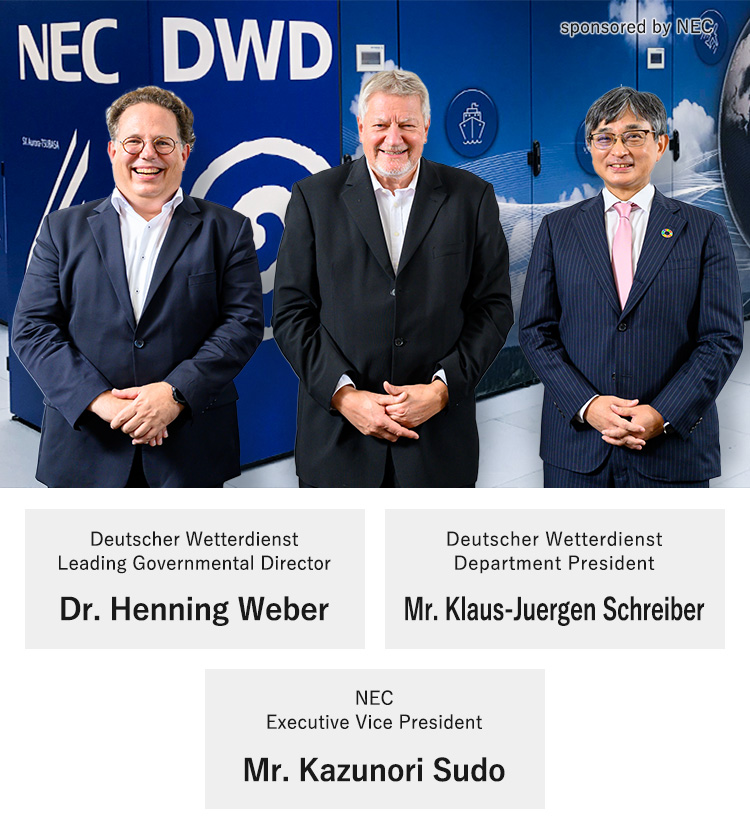


Natural disasters are becoming more severe globally. Heavy damage from storms, floods, droughts, and more are continuing to wreak havoc around the world. Finding solutions that address all of these are in urgent need. Each country is undertaking such challenges, including the German Meteorological Service (Deutscher Wetterdienst (abbreviation: DWD)).
In the summer of 2021, intermittent heavy rains in Europe caused catastrophic flooding in Germany, which lead to the loss of 180 lives.
To mitigate such damage, German Meteorological Service is conducting research to improve the weather forecast accuracy. NEC's SX-Aurora TSUBASA, a vector supercomputer (hereafter, supercomputer), is supporting their challenge.
Two key leaders from the German Meteorological Service, and NEC's Executive Vice President, Mr. Sudo, spoke on the frontline trends of weather forecast.
Could you give us an overview of German Meteorological Service (hereinafter, DWD) and its mission?

Deutscher Wetterdienst
Department President
Mr. Klaus-Juergen Schreiber
Mr. Klaus-Juergen Schreiber(hereinafter, Mr. Schreiber): I am the Director for the Technical Infrastructure and Operations at DWD, the German National Meteorological Service. I am also member of the Board of Directors, which jointly manages and leads DWD. My responsibility lies in the areas of technical infrastructure, comprehending data acquisition from ordinary meteorological observations stations, aerological stations, weather balloons, radar networks, radar stations, to shipping observations and the whole IT infrastructure for data exchange and processing as well as the communication network of the DWD.
DWD is the National Meteorological Service in Germany. Our main missions are to forecast the weather and to provide weather-related warnings, especially for phenomena which can cause damage or have the potential to cause losses of properties or lives. We also aim to provide climatological data and information as well as climate services on different levels and for different users. These users meaning policy and administration staff for the Federal government, the Federal States and municipal levels. We are also working as critical infrastructure supporting mode of transport, for the sea, air, roads, and railroads. We also support energy solutions, especially for renewable energies, with meteorological information. It is very important for us to not only provide the meteorological information in real-time, but also to provide information about the impact which can occur. For example, we work very closely together with users here on the flash flood warning systems of the federal states.
What are some of the weather and energy challenges faced by Germany and its neighboring countries?
Mr. Schreiber: What we are now facing due to climate change is the occurrence of locally, rapidly developing thunderstorms with flash flooding, which causes widespread losses and damages, and we want to improve the forecast system to better detect these weather phenomena. For example, we faced the loss of more than 180 people during flash flooding in a very heterogeneous terrain when we had more than 200 liters of rainfall per square meter over one or two days. When the runoff had caused floods up to seven meters height, it destroyed houses and villages. Thus it is very important, not to only provide meteorological information in real-time, but also to have some information about the impact which can occur so that we work very closely together with the users here on the flash flood warning systems of the Federal States for example. And on the other hand, we also have to give a lot of meteorological information to the providers of wind power and solar power and to those who manage power networks because the output of the renewable energies depends much on the weather conditions.
Could you describe the relationship between DWD and NEC?
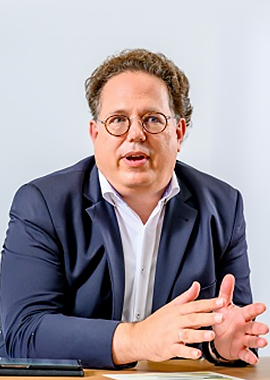
Deutscher Wetterdienst
Leading Governmental Director
Dr. Henning Weber
Dr. Weber: I'm heading the IT department of the German National Meteorological Service and I'm responsible for the IT equipment needed to produce a modern weather forecast. NEC has been a very important partner for DWD, for many years. NEC delivered the first data handling system in 2007, and has continuously maintained the data handling system since then. We store all the meteorological and climatological data in NEC systems. Since then, they have been selected twice to deliver the NEC vector supercomputer for the weather forecasting system. It has been long and very important partnership for us.
What were the key factors during the High Performance Computing (HPC) renewal in 2019 and why did you decide on NEC?
Dr. Weber: Unlike HPC systems you have in the research or academic area, for the National Meteorological Service, you have to run HPC computing or modeling requiring a very, very high level of reliability. That's different from the HPC systems used in research field. The second thing is that the level of the performance requirements for climate and weather modeling are the highest in the world. So we look for a partner who can not only deliver computing performance at an outstanding high level, but also is able to run the system day and night in a very reliable way and provide high-quality support. Those are a few of the reasons we selected NEC. Another very important reason is energy efficiency. Especially in Europe, energy prices are quite high. We were looking for a very energy-efficient solution and that's another reason NEC was selected in this case.
This question is for Mr. Sudo, who heads the NEC system platform business unit. What are the features of NEC's SX-Aurora TSUBASA, and what advantages does it have over competing products?

NEC
Executive Vice President
Mr. Kazunori Sudo
Kazunori Sudo (hereinafter, Mr. Sudo) : I'm the head of the NEC system platform business unit, which covers the development, manufacturing, sales, and support of NEC's IT hardware and software, including the SX-Aurora TSUBASA supercomputer.
NEC's vector supercomputers have a truly unique architecture which is offered exclusively by NEC in the world. The main feature of this supercomputer is the high-execution performance with scientific calculations, and this is made possible by the highly efficient data transfer capability between vector processor and memory, and vector processor is particularly suitable for the computational fluid analysis in meteorological and climate simulations. And as digitalization accelerates, demands for the use of supercomputers in solving complex and large-scale social issues are growing and expanding. In such cases, it is more important to execute and see the actual performance of applications that are being processed in the real world than evaluate general performance benchmark results. This is where NEC has made great efforts, and the results show that it has been effective which requires performance tailored to the characteristics of applications.
What points did you emphasize to DWD?
Mr. Sudo: DWD specified their new supercomputer must exceed by six times or more the performance of the weather system application currently in use, and that the system must be installed within the specified power supply. NEC's SX-Aurora TSUBASA achieved the highest performance in benchmark testing against customers’ actual applications and it demonstrated its superior power efficiency as compared to other competitors.
What are your impressions of NEC's HPC, and what specific results have you seen since its implementation?
Dr. Weber: The adaption of our model code to the NEC platform had been done without great modification of our code. This is a very good thing. Usually, you have to transform your model code to adapt to a new platform. But for the vector platform, only a few changes were required to get very good performance on this platform. That is why we were able to migrate from the old platform to the new platform and start operating on the new system within a few months. Another is that NEC installed a water cooling system for the HPC system and the technology used is so-called “hot water cooling”. We have very high inlet and outlet temperature for the water cooling. We were able to cool the system freely without the use of chillers. This is something which saves you a lot of money in operation. These are two points that lead us to be very satisfied with NEC's platform.
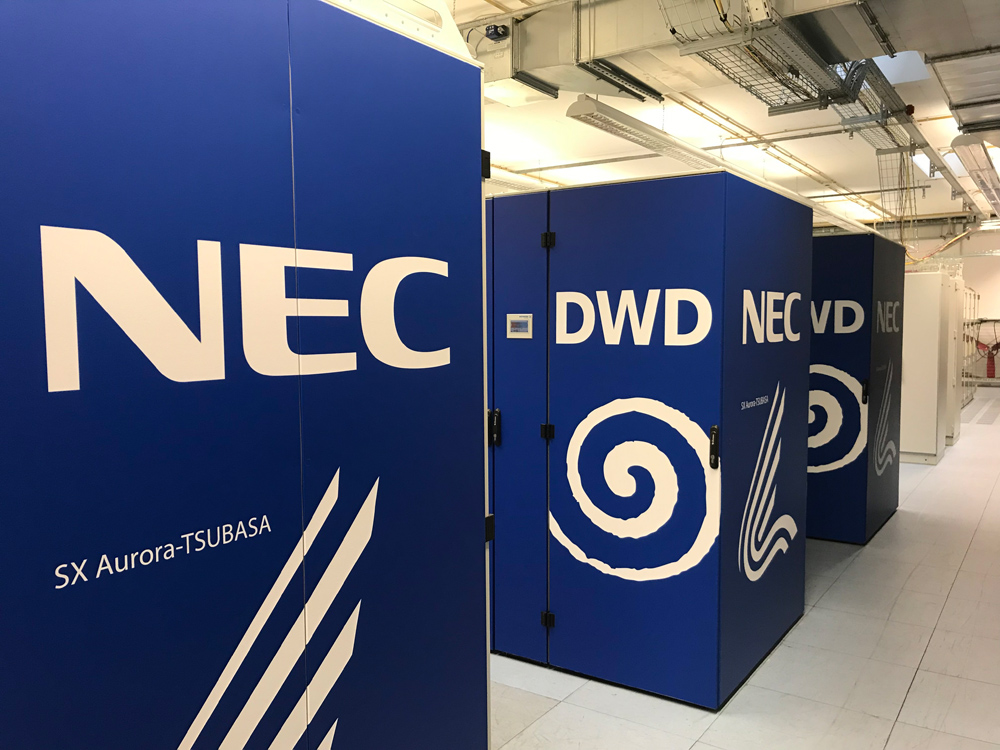
NEC’s supercomputer “SX Aurora-TSUBASA” at DWD’s data center
What positive effects have you seen by utilizing NEC's supercomputer?
Dr. Weber: We have a fixed amount of time available to produce our weather forecasts. Thanks to the new HPC platform, we can now afford to increase the resolution and perform more physical analysis for the same runtime. We are therefore now able to produce more accurate weather forecasts in the same amount of time as before.
Specifically, how much has the grid size (resolution) of the weather simulation been reduced?
Dr. Weber: We have a scientific roadmap for improving the weather forecast step by step, and it has to be in line with the technology roadmap for our HPC system. For example, with the new performance we have with this machine, we are just now implementing a new weather forecasting system which gives us more reliable short-range forecasts for severe weather situations. And now we can afford to run a rapid update cycle, so we will renew the forecast every hour due to the new machine. As for resolution, we are now down to 2.2 km within Germany. For all of Europe, we are simulating a resolution of 6.5 km, and for the entire world, a resolution of 13 km.
Looking towards the future, what kind of activities would DWD aspire to do?
Mr. Schreiber: We are working to further improve our weather forecasting system. We would like to improve the accuracy of the system in terms of time and location, so that we can detect in advance local severe thunderstorms and other events that may be small but have a large impact. We would also like to develop all projects and major services jointly with our users. The goal is to provide services that users can understand at a glance, which makes customization and optimization for each user very important. Furthermore, we would like to create an information platform that covers all kinds of natural disasters that could occur in Germany. Drought is another particular concern in Europe today. Droughts have a significant impact on river transport, agriculture, and forestry, therefore it is important to improve the forecasting accuracy of droughts as well.
You’ve been developing a prediction system detecting local thunderstorms and heavy rain, and other phenomena such as sudden torrential rains which were difficult to predict. Has that prediction system been developed, or is that something coming in the future?
Mr. Schreiber: We are making good progress, but have not yet reached our final goal; we are looking forward to the HPC system upgrade to further increase our computational performance, and we are developing a number of new physical parametrization functions in anticipation of the HPC system upgrade, which will go into pre-operation as soon as the system is upgraded. To date, the new modelling system has passed physical and numerical validation and is now being prepared for the final phase.
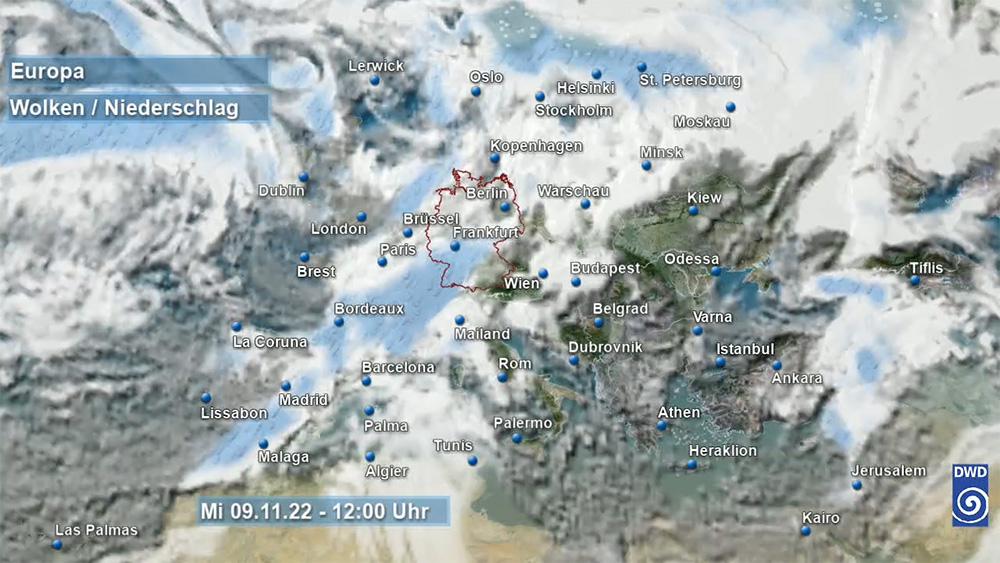
Real-time visualization of clouds and precipitation in Europe. After the data is simulated by a supercomputer, it is converted to video and monitored 24H365 days(Source: DWD)
I think forecasting local severe weather is a very difficult challenge, and I understand that you are planning to introduce the SX-Aurora TSUBASA with improved performance in September 2023. Will you start operating a local severe weather forecasting system after the introduction of the SX-Aurora TSUBASA?
Dr. Weber: We have a multi-phase contract with NEC, the first phase of which will achieve the performance needed to develop the model; the 2022 system upgrade allows us to move into the pre-operational phase for further testing and optimization. Then in 2023, new NEC supercomputer resources will be added to the system to begin production operations.
So, you will continue to cooperate with NEC in the mid-to-long term to improve accuracy with this system and achieve local weather forecasting?
Dr. Weber: Yes, we will gradually increase performance and forecasting accuracy through joint projects for at least 3 or 4 years, and we have firm plans be using NEC's supercomputers to make forecasts at least until 2026.
Will highly power-efficient machines be a key factor in the future?
Dr. Weber: We believe that this will definitely be the case. Especially in Europe, where energy costs are very high, it is very important to be able to simulate efficiently.
This requires systems with high-bandwidth memory and efficient cooling technology. This is a point of high importance, not only for weather-related applications, but for all industries that are doing advanced simulations, at least for the next few years.
What about quantum computers? What are your expectations and proposed utilizations?
Dr. Weber: Quantum computers are still a new technology for use in weather services, but we are keeping a close eye on developments. We need to wait for gated quantum computers to be available for large-scale modeling of weather phenomena with quantum computers, which will still take 20-30 years. However, for quantum annealing computers, there is potential to solve the optimization problems associated with improved weather prediction. This is of interest to our customers, and in the future the German Meteorological Office will work with them on optimization problems. We believe that we will play an important role in this process.
What are NEC's future plans high-performance computing and quantum computers?
Mr. Sudo: NEC will continue to provide optimal HPC systems for the various customers and fields that demand HPC, including the meteorological and climate fields. Current HPC is mainly used for scientific calculations and simulations. But its use is expanding in the fields of AI and machine learning. Regarding quantum computing, NEC aims to provide solutions for their combinational optimization problem by using the high-performance simulated annealing technology, which is implemented on top of NEC's vector supercomputer. By leveraging on these technologies, NEC would like to expand its use and address the various challenges of the world.
What kind of partnership would you like to build with DWD in the future?
Mr. Sudo: We have a long-standing relationship with DWD and we are very honored to have received their trust through the superiority, ease of use, and the support of our vector supercomputers in meteorological and climate fields. NEC would like to continue to provide the best solutions to DWD and our valued customers and contribute to making the world a better place together.
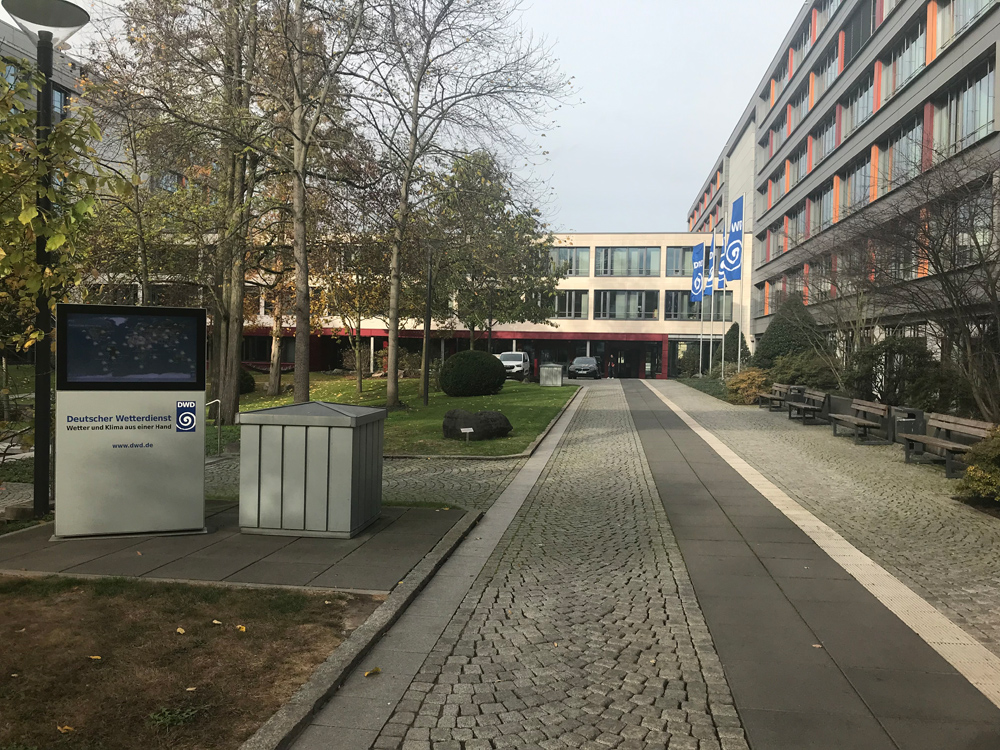
DWD Headquarters in Offenbach
What are your expectations of NEC?
Mr. Schreiber: We look forward to the evolution of technology that will lead to highly accurate weather forecasting over local areas. I also hope that systems equipped with such technology can be operated with less maintenance and less energy consumption to achieve even higher performance and stable operation. We look forward to these technological advancements and NEC to continue to be a reliable partner with DWD as they have been in the past.
Dr. Weber: We hope that NEC will continue to make new technologies available for all those who need highly-efficient and reliable platforms for critical applications like weather forecasting.